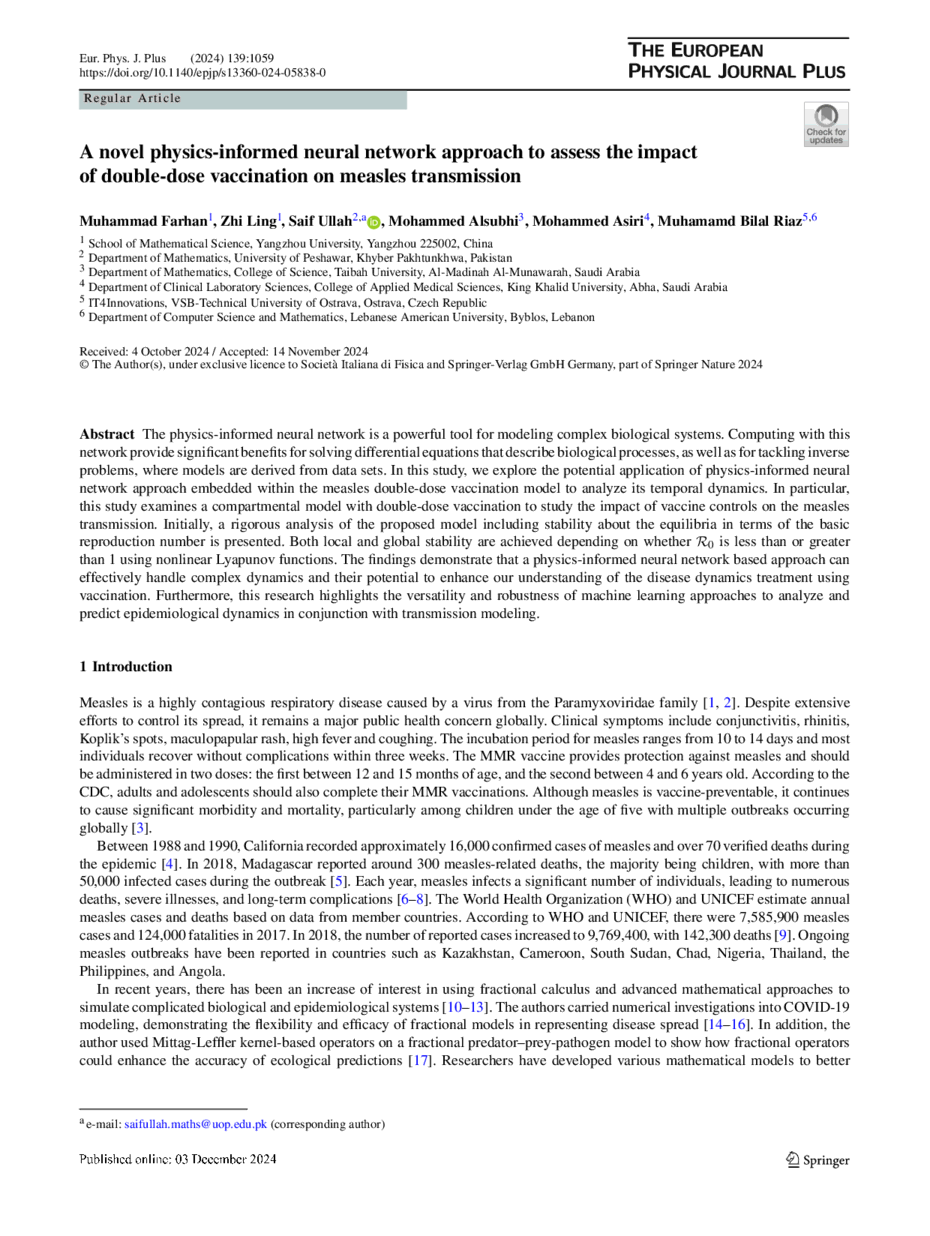https://doi.org/10.1140/epjp/s13360-024-05838-0
Regular Article
A novel physics-informed neural network approach to assess the impact of double-dose vaccination on measles transmission
1
School of Mathematical Science, Yangzhou University, 225002, Yangzhou, China
2
Department of Mathematics, University of Peshawar, Khyber Pakhtunkhwa, Pakistan
3
Department of Mathematics, College of Science, Taibah University, Al-Madinah Al-Munawarah, Saudi Arabia
4
Department of Clinical Laboratory Sciences, College of Applied Medical Sciences, King Khalid University, Abha, Saudi Arabia
5
IT4Innovations, VSB-Technical University of Ostrava, Ostrava, Czech Republic
6
Department of Computer Science and Mathematics, Lebanese American University, Byblos, Lebanon
Received:
4
October
2024
Accepted:
14
November
2024
Published online:
3
December
2024
The physics-informed neural network is a powerful tool for modeling complex biological systems. Computing with this network provide significant benefits for solving differential equations that describe biological processes, as well as for tackling inverse problems, where models are derived from data sets. In this study, we explore the potential application of physics-informed neural network approach embedded within the measles double-dose vaccination model to analyze its temporal dynamics. In particular, this study examines a compartmental model with double-dose vaccination to study the impact of vaccine controls on the measles transmission. Initially, a rigorous analysis of the proposed model including stability about the equilibria in terms of the basic reproduction number is presented. Both local and global stability are achieved depending on whether  is less than or greater than 1 using nonlinear Lyapunov functions. The findings demonstrate that a physics-informed neural network based approach can effectively handle complex dynamics and their potential to enhance our understanding of the disease dynamics treatment using vaccination. Furthermore, this research highlights the versatility and robustness of machine learning approaches to analyze and predict epidemiological dynamics in conjunction with transmission modeling.
is less than or greater than 1 using nonlinear Lyapunov functions. The findings demonstrate that a physics-informed neural network based approach can effectively handle complex dynamics and their potential to enhance our understanding of the disease dynamics treatment using vaccination. Furthermore, this research highlights the versatility and robustness of machine learning approaches to analyze and predict epidemiological dynamics in conjunction with transmission modeling.
Copyright comment Springer Nature or its licensor (e.g. a society or other partner) holds exclusive rights to this article under a publishing agreement with the author(s) or other rightsholder(s); author self-archiving of the accepted manuscript version of this article is solely governed by the terms of such publishing agreement and applicable law.
© The Author(s), under exclusive licence to Società Italiana di Fisica and Springer-Verlag GmbH Germany, part of Springer Nature 2024
Springer Nature or its licensor (e.g. a society or other partner) holds exclusive rights to this article under a publishing agreement with the author(s) or other rightsholder(s); author self-archiving of the accepted manuscript version of this article is solely governed by the terms of such publishing agreement and applicable law.





